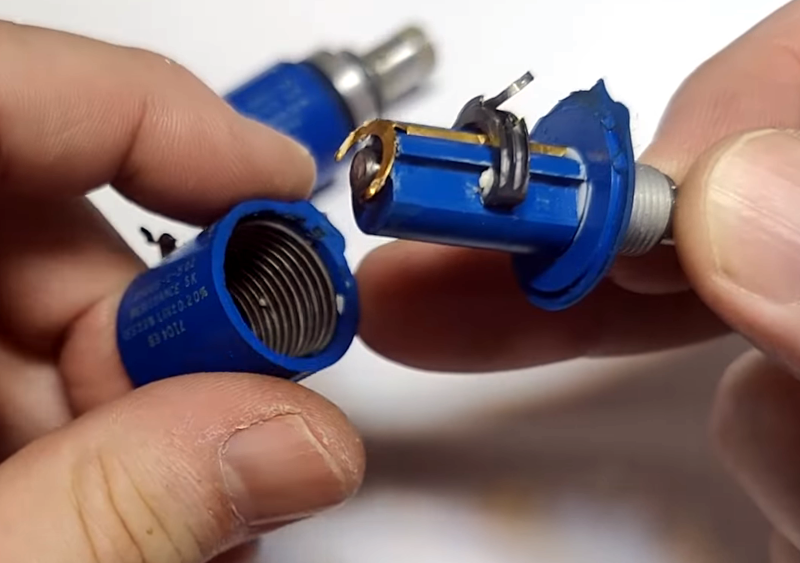It is easy to think of a potentiometer as a simple device, but there are many nuances. For example, some pots are linear — a change of a few degrees at the low end will change the resistance the same amount as the same few degrees at the high end. Others are logarithmic. Changes at one end of the scale are more dramatic than at the other end of the scale. But for very precise use, you often turn to the infamous ten-turn pot. Here, one rotation of the knob is only a tenth of the entire range. [Thomas] shows us what’s inside a typical one in the video below.
When you need a precise measurement, such as in a bridge instrument, these pots are indispensable. [Thomas] had a broken one and took that opportunity to peer inside. The resistor part is a coil of wire wound around the inside of the round body. Unsurprisingly, there are ten turns of wire that make up the coil.
The business end, of course, is in the rotating part attached to the knob. A small shuttle moves up and down the shaft, making contact with the resistance wire and a contact for the wiper. The solution is completely mechanical and dead simple.
As [Thomas] notes, these are usually expensive, but you can — of course — build your own. These are nice for doing fine adjustments with precision power supplies, too.
















It needs one more turn of wire, so that it can be turned up to 11. ;)
That is what the half turn on each end of the coil is for. Requires some hacking to make use of it though. You don’t want any old idiot to turn it up to 11.
Trouble with wire-wound anything, it introduces a measure of inductance as well as resistance.
Some wire-wound resistor devices are designed to be (predominantly) non-inductive through reverse windings. I don’t think that pots are typically one of those though. I have a handful left from the late 70’s but they were always too valuable in testing setups to sacrifice.
I’ve got a 15 turn pot and dial and one 75 turn pot, so much more than just 11! No better way to tune a voltage based synth. 2 ten turns replaced the 4 janky fine and coarse slide pots on my Arp. Changing one osc relative to the other whilst playing is easy. I wish guitars etc. were that easy to tune.